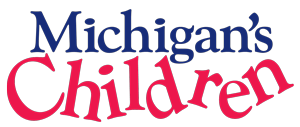Will Your Vote Improve Educational Equity?
Last week, an AnnArbor.com news article highlighted the successes of Ypsilanti Public Schools with using the fifth and sixth years of high school to improve their high school completion rate. As a Washtenaw County Resident, I was proud to see Ypsilanti Public Schools utilizing a strategy that has shown to reduce high school achievement gaps between white students and students of color – a strategy aligned with Michigan’s Children’s educational equity priorities. And related to educational achievement outcomes, on November 6th, Ypsilanti and Willow Run residents will see a proposal on their ballot to consolidate the two school districts that, if passed, would lead to a re-envisioning of public education.
What does consolidation have to do with educational equity? While the ins and outs of the consolidation in terms of financial implication is beyond Michigan’s Children’s purview, the notion of re-envisioning the current education system is one that we can get on board with. These particular consolidated district plans would incorporate a cradle-to-career approach to education (similar to Michigan’s Children’s cradle-to-career strategy) that would redefine the notion that public education is a K-12 system that falls within the school walls. The ballot proposal is one way of many that citizens from all over Michigan can get engaged in this re-envisioning conversation.
The Michigan Department of Education is already taking steps to expand beyond the K-12 tradition. The Office of Great Start was established last year to bridge the gap between early childhood education and K-12 and to align the state’s early learning and development investments to increase school readiness and early literacy. Research shows that investing in high quality early childhood programs that target young kids most at-risk of being unprepared for kindergarten is critical to reducing the educational achievement gap – a gap that can be traced to children as young as nine months of age.
But, we know that Michigan’s current level of early childhood investment does not reach all of the children who could benefit from high quality early learning programs, so efforts must be made to continue to focus on improving educational outcomes for all kids in K-12. The State of Michigan’s ESEA Waiver (also known as the No Child Left Behind waiver) focuses on reducing gaps in all schools – between white students and students of color, students from upper-class families and those from low-income families, and even students that are highly proficient versus under-proficient regardless of demographics. In a nutshell, the state’s waiver focuses on reducing equity gaps – a strategy that cannot be done within the traditional K-12 system alone.
This takes me back to the beginning of my blog – a cradle-to-career education strategy much include components that take advantage of equity-promoting strategies like high quality early learning opportunities, access to before- and after-school programs that promote learning beyond the traditional school day, use of the 5th and 6th years of high school like in Ypsilanti Public Schools to increase high school graduation rates, and alternative education programs that may utilize online learning and/or link young people to college prep and workforce development opportunities. Residents of Ypsilanti and Willow Run have a serious decision to make on November 6th that may lead to some of these strategies. The rest of us do as well – how are the individuals we are electing into office going to ensure that Michigan is appropriately educating ALL of our children?
-Mina Hong
